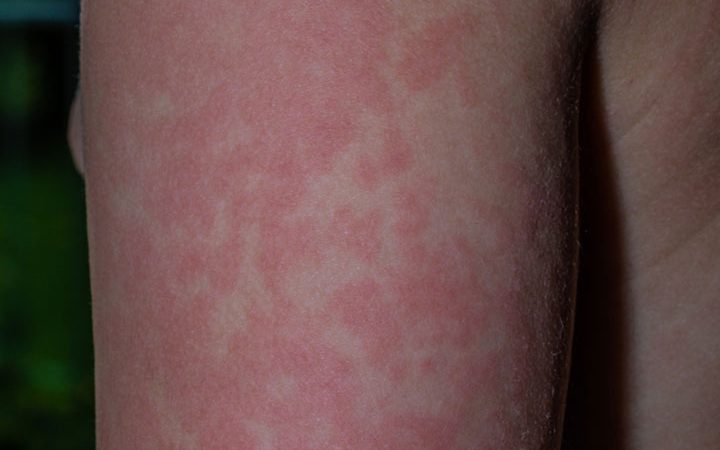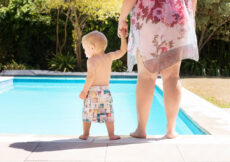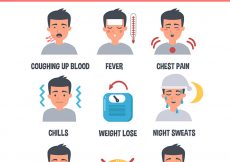The fifth disease in kids is a viral infection caused by human parvovirus B19. It got its unique name from being the fifth on the list of the most common types of skin rashes in children, with the first four ones being measles, rubella, chickenpox, and roseola (1) (2).
The fifth disease rash is also called the “slapped cheek rash” since its first notable manifestation is a bright red rash on the child’s cheeks. The illness is most commonly seen in school-going children and is transmitted usually during the spring and winter seasons (3). The usually mild infection can be treated with simple medications. In this post, we tell you about the fifth disease in children, its cause, symptoms, and treatment.
Is Fifth Disease Contagious?
The fifth disease can spread among children through direct contact with an infected person or an infected person’s blood. Also, it can spread from touching objects or surfaces contaminated with the saliva and mucus droplets from the nose or mouth of an infected person. However, the fifth disease can transmit only before the rash appears when other symptoms prevail. Once the rash develops, the child is no longer contagious (3).
What Are The Signs And Symptoms Of Fifth Disease In Children?
The fifth disease proceeds in stages, and so do the signs, as they are different in all the stages (4).
1. First stage: It lasts for one to two weeks, and the child is most contagious during this phase. The child may experience:
- Low-grade fever
- Faint headache
- Fatigue
- Runny or stuffy nose, and sore throat (cold-like symptoms)
- Joint pain or muscle pain with swelling, mostly in older children
2. Second stage: This stage marks the beginning of the “slapped cheek” phase, which starts about two to three weeks after the onset of the infection. The child is not contagious during this period, and the rash only lasts for five to ten days.
3. Third stage: The rash spreads from the face to the arms, thighs, and chest. During this time, it appears patchy and lace-like and can be itchy at times. The third stage typically lasts for one to three weeks.
Note: Certain triggers, such as exercises, sunlight, extreme cold or heat, and stress, may cause the rash to reappear after weeks of its disappearance.
Who Is At Risk Of Developing The Fifth Disease?
Children between the ages of four and ten can be at a higher risk than adults since most adults would have been immune from childhood exposure to the virus. In addition, children in closed, crowded gatherings may have a higher chance of getting infected (5).
What Are The Complications Of Fifth Disease In Children?
Fifth disease is a mild illness for healthy children and adults. However, the symptoms can cause severe complications in people with a weakened immune system due to conditions such as an HIV infection, cancer, or organ transplantation (6). Since the parvovirus affects the body’s red blood cells, children with blood cell disorders, such as sickle cell disease, could encounter complications such as chronic anemia. Affected children may require a blood transfusion to manage the complications (2) (7).
How Is Fifth Disease Diagnosed?
The doctor may examine the rashes and often diagnose the disease from the rash’s appearance. Additionally, blood testing may be carried out to confirm the diagnosis by checking the presence of parvovirus B19 (6).
How Is Fifth Disease Treated?
The disease does not have any specific treatments. The healthcare provider may recommend some medicines and home remedies to alleviate the signs and symptoms (8).
- Drinking plenty of fluids
- Prescription for acetaminophen or ibuprofen to reduce the fever
- Prescription for antihistamines for the itchy rash
Some medicines may not be suitable for children under six months of age unless prescribed by the doctor. Do not give aspirin since it may cause severe side effects in some children.
How To Prevent Fifth Disease In Children?
Since the disease does not have a vaccine or specific treatment, it is better to adopt preventive measures. An effective way is to maintain personal hygiene. Do not let your child be near an infected person or share common things with them. Some ways for children to prevent the spread of the virus and avoid contracting it are (4):
- Wash hands frequently
- Do not touch the eyes or nose
- Cover the mouth and the nose while coughing or sneezing
Conclusion
Fifth disease is a common childhood illness with mild symptoms in children with a healthy immune system. You can prevent the infection, but in most cases, it goes away without posing any complications with proper medications and home care.
References:
MomJunction’s articles are written after analyzing the research works of expert authors and institutions. Our references consist of resources established by authorities in their respective fields. You can learn more about the authenticity of the information we present in our editorial policy.
The following two tabs change content below.




































